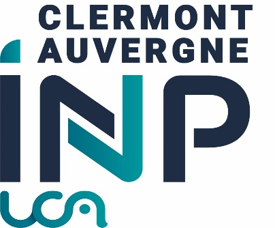Environment engineering systems (EES)
EES activity encompasses the development and modelling of physicochemical or hybrid processes for the environment, mainly dedicated to water and wastewater treatments.
Contacts: Ch. Vial, F. Audonnet, J.-P. Fontaine
Context
The preservation of the water resource is one of the major challenges of the 21st century. The objective of this task, in parallel to MELiSSA, is to develop physical, physicochemical or hybrid treatments able deal with suspended solids, colloidal matter, and biorefractory pollutants or micropollutants including organic compounds, heavy metals or inorganic anions. The applications involve drinking water, but also urban wastewater and wastewaters from mineral, textile or pharmaceutical industries. These processes are mainly based on physical separation, adsorption and electrochemical tools so that pollution can be directly removed or made more easily biodegradable by conventional biological processes. Specifically, the GePEB department has skills and equipment on:
- Electrochemical methods, in particular electrocoagulation/electroflotation
- Adsorption and adsorbent characterization
- CFD for the simulation of physical, chemical and biological processes
Main projects done on environment engineering systems
- Hybrid treatments for the removal of biorefractory pollutants (Lebanese Ph.D. grant in cooperation on pharmaceuticals with ENSCR, Rennes, France; cooperation on textile dyes with LIPE, Casablanca, Morocco)
- CFD modelling of hydrocyclones for the mineral industry (Regional grant)
Current projects
- Electrocoagulation and adsorption processes for the removal of biorefractory pollutants and micropollutants from the textile and the pharmaceutical industries.
- Hydrocyclone modelling for the separation of bentonite for the mineral industry
Biological Life Support Systems (BLSS)
BLSS activity concerns the works on the Micro-Ecological Life Support System Alternative (MELiSSA) supported by European Space Agency (ESA).
Contacts : C. Creuly ,L. Poughon , JF. Cornet, C.G. Dussap
Context
In human spaceflight, a life support system is a group of devices that allow a human being to survive in space, , on the Moon, and on Mars.. These systems for human spaceflight missions are usually called environmental control and life support system (ECLSS) The life support system shall supply air, water and food and manage waste. It must also maintain the habitability of the spacecraft (temperature,pressure,..), shielding against harmful external influences (radiation, micro-meteorites,….). Components of the life support system are life-critical, and are designed and constructed using safety engineering techniques.
Advanced Life Support Systems (ALSS) supporting functions of atmosphere control, supply, and revitalization; water recovery and management; waste management; and food management are directed toward scientific research and technology development related to physical/chemical (P/C) and bioregenerative processes. P/C processes use traditional engineering methods, such as filtration, distillation, and oxidation; bioregenerative processes are performed by living organisms.
On Earth, biological agents, acting in concert with a biotic aspects of the biosphere, have provided a closed-loop life support system for millions of years. Bioregenerative life support systems are the only ALSS with which a complete closed system can be achieved, allowing autonomous life without resupply from Earth. They are based on the idea of utilizing the natural biological abilities of living organisms to provide life support in a microcosm. The challenge is to make the microcosm small and reliable and is linked to problematic on:
- Bioprocesses for anaerobic, aerobic and photosynthetics organisms
- Closed loop chain of processes (up to 100% closure)
- Control of bioprocesses and control of closed loop of bioprocesses
- Integration of bioprocesses and physic-chemical processes with ECLSS contraints
- Safety of bioprocesses
Main projects
The GePEB department is involved in the European Space Agency BLSS project MELiSSA and in several programs linked to MELiSSA activities such as cooperation with BIOS3 project developed by Russian Space Agency.






